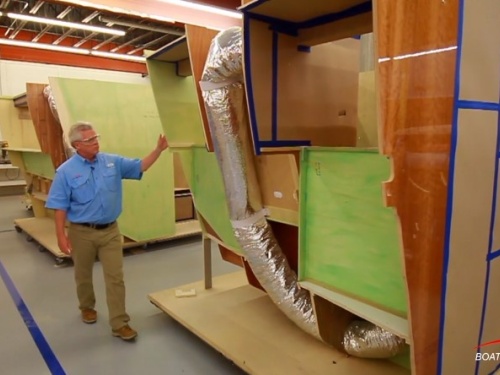Access More Boat Tests
Already have an account? Login
Hatteras Factory - Why So Expensive?
Captain's Report
Introduction
There’s a lot that goes into a Hatteras, from many different aspects that command a premium value for a premium yacht. For starters, there’s the resin infusion process. It’s much more involved and much more labor intensive, but the result is a lighter boat with more strength. Additionally, the Hatteras factory maintains the quality control that makes the boats so well regarded with respects to their fit-and-finish.
Let’s start with the small component pieces and see how it comes together.
Divinycell Foam
The first step is to assemble everything dry with Divinycell foam. Because it’s cut it can be bent and shaped. Plus, this allows the resin to seep well into the core. Also, because each of the 1” x 1” (2.54 cm x 2.54 cm) cubes gets encapsulated, if we were to put a screw into it, water still would not get past the single piece that we screwed into.
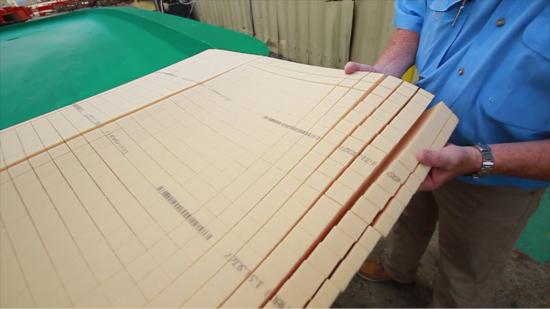
Assembly
The process begins with the foam core component. Laid on top is fiberglass mat, then peel ply, then the media flow. It all gets bagged, a resin line is run through the bag, and then tack tape gets put onto the vacuum line which gets attached to the assembly.
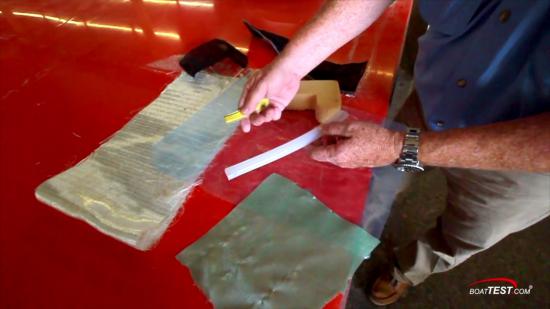
Bagging and Sealing
Once all of the assembly is done, then it’s bagged and sealed. Everything here needs to be perfect because if flaws get in, the whole piece is trashed. There really is no room for error, so it’s a painstaking process.
Suction tubes are added to the bagging process. Then finally, the whole piece is fully bagged and sealed up tight, and it’s time to attach the hoses from a suction pump manifold to the bagged part. As all the air is sucked out, the bag forms to the part.
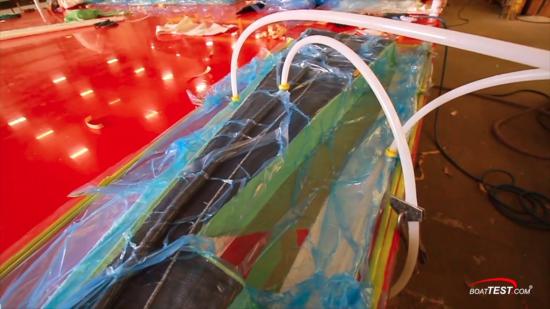
Meanwhile, resin is mixed with hardener, and now it has to be done quickly before the mix starts to cure. When it’s mixed completely, the pickup line is put in, the clamp is released, and the ongoing suction draws the resin into the vacuum bag and through the entire piece.

The result is a solid piece of material, hard as a rock. Each finished piece gets numbered so they know exactly where it goes.
How About Larger Components?
The process is the same on a much larger scale as well, such as when resin infusing a larger yacht. On this level, even the locations of the feed drums that hold the resin are carefully planned. Something on this level takes about 10 days of prep and the whole infusion process itself takes roughly 65 minutes to complete. Including areas like the bow thrusters, struts, shaft logs, even the hull side windows getting doubled up on the glass work. But the process is exactly the same.
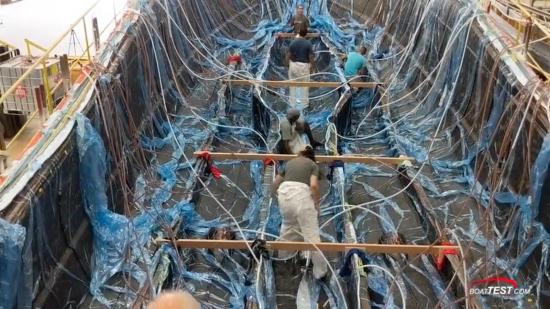
Quality Control
Visually we can see that everything was done right but we need to go deeper than that. Pieces eventually must be cut away such as a porthole, a strut, or an exhaust port. That piece that is cut away is first looked at with a magnifier to ensure that it has the right number of layers that it’s supposed to. Then, it gets weighed before being put into a furnace.
The fiberglass doesn’t burn, but the resin does, so the quality control techs burn that away and measure again. Now with some calculations, they can determine the exact resin-to-glass ratio, look up what it’s supposed to be, and ensure that they match.
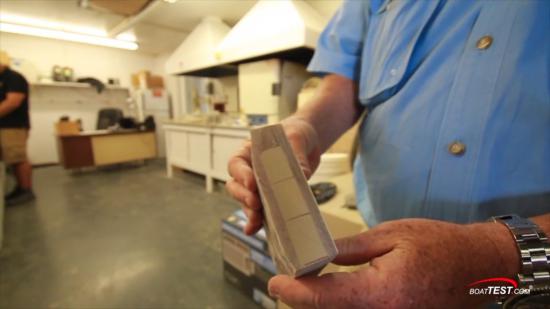
That resin infusion and quality control process is only one part of that added expense with a Hatteras. Many more extra steps that Hatteras takes are what not only add to the yacht’s expense, but make the difference in a Hatteras.
Custom Tuned Props
For example, the hull and props are tuned to each other for better efficiency, and the props are pitched right in house in Hatteras’ prop shop. The exact pitch of each prop is carefully measured against specs, and if necessary, moved on to have the pitch adjusted.
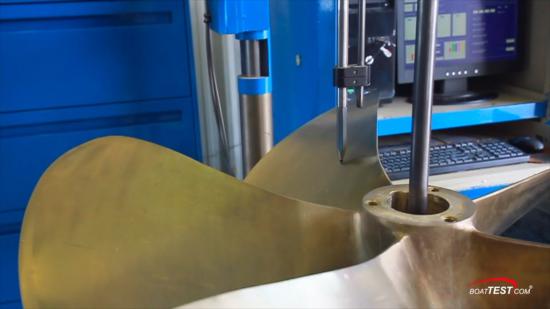
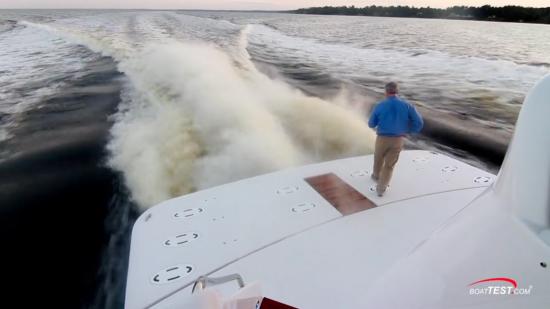
The result is a smooth, vibration-free yacht, even when observed where the vibration would be the worst… right over the props.
Out of the Box Tech
Now a lot of this in-house work leads to some very interesting technology being developed right in the Hatteras plant. For example, the propeller shafts now have round keyways. The reason for that is, when utilizing a round keyway, the load gets spread out all throughout the keyway. With a square key way, which we’re used to seeing, the load is greatest at the edges. As the propeller is put on, there’s a little bit of a lift created at the end. That creates a stress riser.
Quite often, right at those edges, torque stress is created. It causes a crack that starts at the stress point and then continues around the shaft until it reaches a point where the shaft can no longer support itself and it separates.

The solution was to use a more cylindrical keyway that spreads the load more evenly across its full length. Now, since Hatteras went from the square key ways to the round key ways, the shaft failures have dropped to zero.

Innovation Created in House
Hatteras is among the most innovative builders as well. For example, the rudder is not just welded to a shaft like we usually see. Instead, the rudder shaft is slotted, and the rudder slides into that slot, and then it’s welded.
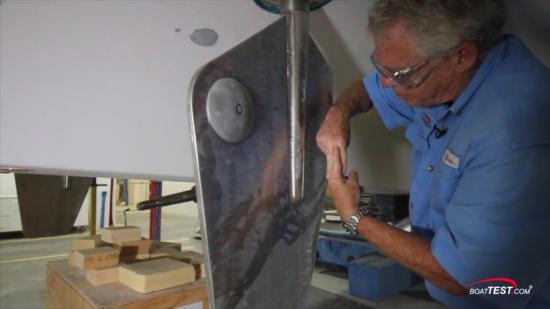
So instead of the weld keeping the rudder from spinning on the shaft, this weld only holds the rudder in place. The slot is what keeps it from spinning so that no loads are transferred to the weld.
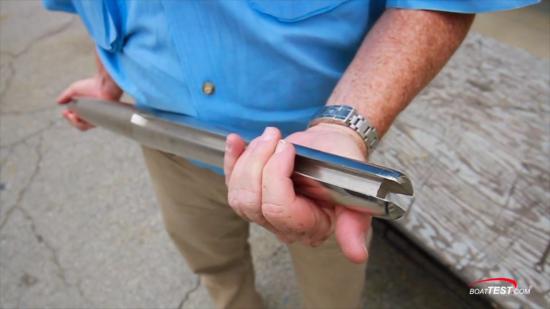
Innovations Continue
On Hatteras Yachts, even the fuel fills are kind of a neat setup. First of all, there’s the patented Hatteras vents that can accommodate hanging a bucket under to catch any fuel that might come out. However, that’s a rare occurrence because we have fuel level indicators right at the fill port, so that when the level reaches 95-percent an alarm goes off. We silence the alarm, then slow the process down and finally shut the fueling process off when we get to the full point.
Now all of this of course is connected to the HattCON app, which is accessible on a smartphone. So we can be up at the fuel pump, looking at the fuel fill and seeing how the level is the whole time.
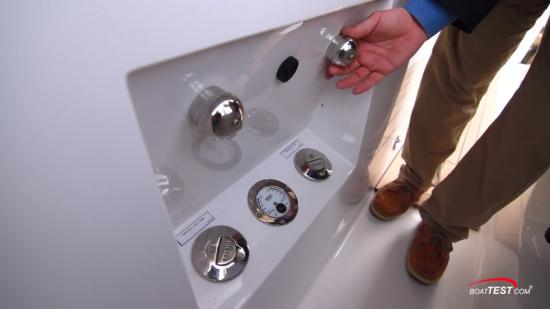
Innovations Continue with the Shaft Strut Bearing. All manufacturers use the type that has the grooves through their length to lubricate the shaft. But we’ve all heard shafts squeal. The way Hatteras gets around that is by cutting annular grooves in across the length-wise grooves to allow more water in to lubricate the shaft, and eliminate the squeal.
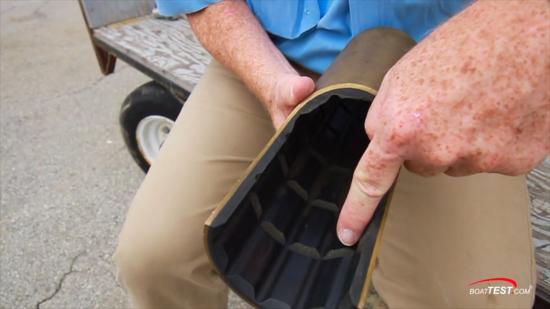
Paint
Even the paint shop is not spared the intense scrutiny of Hatteras standards. The first step is dewaxing the hull, when it comes out of the mold. Then it must be washed, sanded, and stripped.
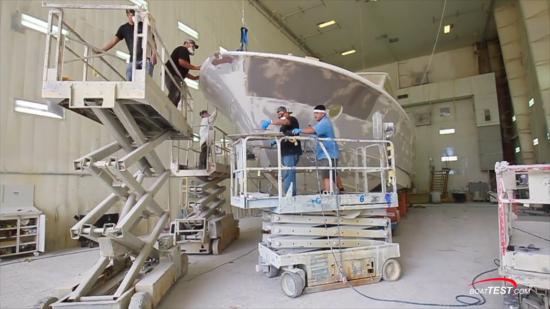
So after all those steps, the finished product looks like a mirror with a beautiful glossy finish.
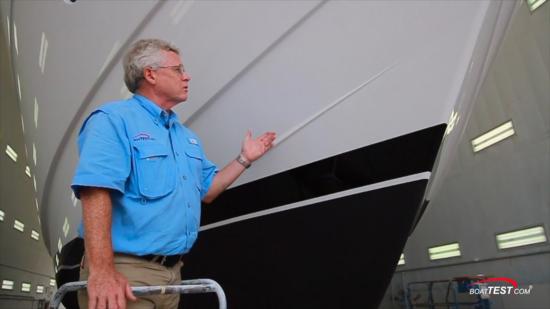
Conclusion
So clearly, there’s a lot more than meets the eye in a Hatteras. There’s a lot of quality control, a lot of out of the box thinking, and a lot of unique engineering that makes these yachts among the best in the world. It commands a premium price, but premium quality goes with it.


